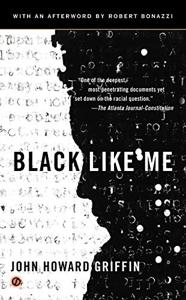
Want to learn the ideas in Black Like Me better than ever? Read the world’s #1 book summary of Black Like Me by John Howard Griffin here.
Read a brief 1-Page Summary or watch video summaries curated by our expert team. Note: this book guide is not affiliated with or endorsed by the publisher or author, and we always encourage you to purchase and read the full book.
Video Summaries of Black Like Me
We’ve scoured the Internet for the very best videos on Black Like Me, from high-quality videos summaries to interviews or commentary by John Howard Griffin.
1-Page Summary of Black Like Me
Overall Summary
Preface
John Howard Griffin begins his essay by noting that he may not have covered everything. He says some people will think that the experiences of a white man being black in the South aren’t reflective of what it’s like for African Americans to be treated as second-class citizens there. However, he insists this is wrong because we don’t have time to argue about insignificant points and ignore the facts. In fact, Griffin says, “the real story is one of men who destroy souls and bodies for reasons neither really understands.”
October 28, 1959
A white man living in the south wanted to know what it was like to be black and experience discrimination. He read reports about high suicide rates among blacks, but society insisted that whites had good relationships with blacks. Disappointed by this contradiction, he decided to become a black man so that he could learn about these issues firsthand.
To understand what it’s like to be African American in the South, Griffin believes that you need to “become” a black man. He knows that communication between whites and blacks is stilted because Southern blacks won’t tell white people the truth because they’ll get punished for doing so.
October 29, 1959
After Griffin decides to disguise himself as a black man, he drives down to Texas and meets with his friend George Levitan. He wants advice on whether or not it’s a good idea. At first, Levitan doesn’t think that it is because he thinks that Griffin will be killed by racists in the south. However, after thinking about it more, he realizes that this project could help people understand racial inequality better. Although there are risks involved for Griffin, this project will have great benefits if successful.
Griffin and Levitan agree that Sepia will pay for all of Griffin’s expenses in return for a handful of articles about what it’s like to be an African American in the South. On his way out, Griffin has another conversation with Jackson, who reminds him that there are “other currents” besides racism, including some people who don’t want to stir up anything.
Griffin wanted to take a risk and do something important. He decided to go through with it, even though his family didn’t think he should. His wife agreed to help him by taking care of their children, which she thought was important for him. That night, Griffin went back home and started working on the project at home in his office (which is five miles from his house). It was quiet outside because there were crickets chirping in the background. He felt lonely because he knew that this would be hard work but that it was worth it if he succeeded.
October 30, 1959
Griffin has lunch with Adelle Jackson and George Levitan, plus three FBI agents. They discuss the experiment and whether Griffin should change his appearance or identity. The group decides that he shouldn’t change his name or identity but only alter his pigmentation so people will draw their own conclusions about who he is. One of the officers tells him not to be serious because they won’t ask any questions once they see him as a black man.
November 1, 1959
Griffin arrives in New Orleans, checks his bags at a hotel, and goes out to walk the streets. He marvels at the sights of the city and is grateful for his vision because he had been blind during his first visit there ten years ago. Now that he can see again, every view seems magical. Griffin enjoys an upscale meal of oysters while wondering about what life will be like once he becomes black. Will there be restaurants where blacks eat? Is it okay for him to stay in a hotel as a black man? These are some of the things that worry him as he anticipates difficulties staying in hotels after darkening his skin.





